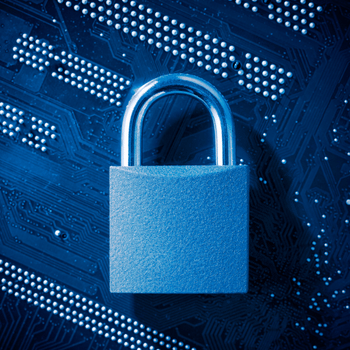The history of information security: protecting knowledge for over a century
 Nowadays, there’s a lot of talk about information security. But did you know that concerns around confidentiality, the integrity and availability of data go back a lot further than most people imagine? It’s hard to say exactly when humanity began taking measures to protect information, though there are several truly interesting historical facts related to the topic.
Nowadays, there’s a lot of talk about information security. But did you know that concerns around confidentiality, the integrity and availability of data go back a lot further than most people imagine? It’s hard to say exactly when humanity began taking measures to protect information, though there are several truly interesting historical facts related to the topic.
Believe it or not, the first use of encryption, for example, is often attributed to the Hebrews, in 600 B.C. They used the Caesar cipher, a simple substitution cipher, to write the Book of Jeremiah. It took another 800 years for cryptanalysis to arise when students began attempting to decipher Hebrew encryption and “translate” that part of the Bible so we could understand it. Despite the Caesar cipher being nowhere near as complex as those used nowadays, it was certainly a huge challenge.
Later, in the First and Second World Wars, encryption again played a vital role in protecting communication and the exchange of secret information among the nations battling against one another. It was during this time that two critical encryption and decryption machines were created: Germany’s Enigma, patented by Arthur Scherbius, and the Turing machine, developed by Englishman Alan Turing. The latter, developed by the “father of modern computer science”, was used to decipher German messages and gain an advantage in the conflict.
From physical to digital
In the 1950s and 1960s, the United States and the Union of Soviet Socialist Republics were engaged in the famous Cold War. Within the United States National Security Agency, pamphlets and posters were distributed to raise awareness among employees about the importance of protecting information. After all, spies were common during this period, and officials had to be educated on practices that we refer to nowadays as “elevator pitch”, “tailgating” and the “clean desk policy”.
In the following decade, with the popularization of microprocessors and the birth of computers, information began being stored, processed and transported through digital means, giving rise to cybersecurity. Thus, it became necessary to create other protection controls: physical access controls were crucial to prevent people from getting close to a machine, and logic access controls were important for monitoring who could access these computational resources.
The 1980s saw the emergence of the first computer viruses – initially, they were designed merely to “troll” companies and end users, though they rapidly evolved to gain malicious attributes. Soon after came the antivirus solutions and other protection resources, like firewalls and so on. Since then, information and data have become more important than ever. As such, it’s obvious that technologies designed to protect them are now also developing at an impressive rate.
Awareness is still important!
One of the most interesting points noted in this whole story is that, if there is anything that hasn’t changed over the years, it’s the importance of educating and raising awareness among users to do their part in protecting confidential information and sensitive data. As mentioned back in the 1960s, NSA already had a huge archive of posters highlighting “silly” attitudes in the daily routine that could reveal more details about a project than what was safe.
At the end of the day, technology evolves, data storage methods change, but the relevance of the human factor always remains: people behind the information must understand the risks and know how to avoid them.
